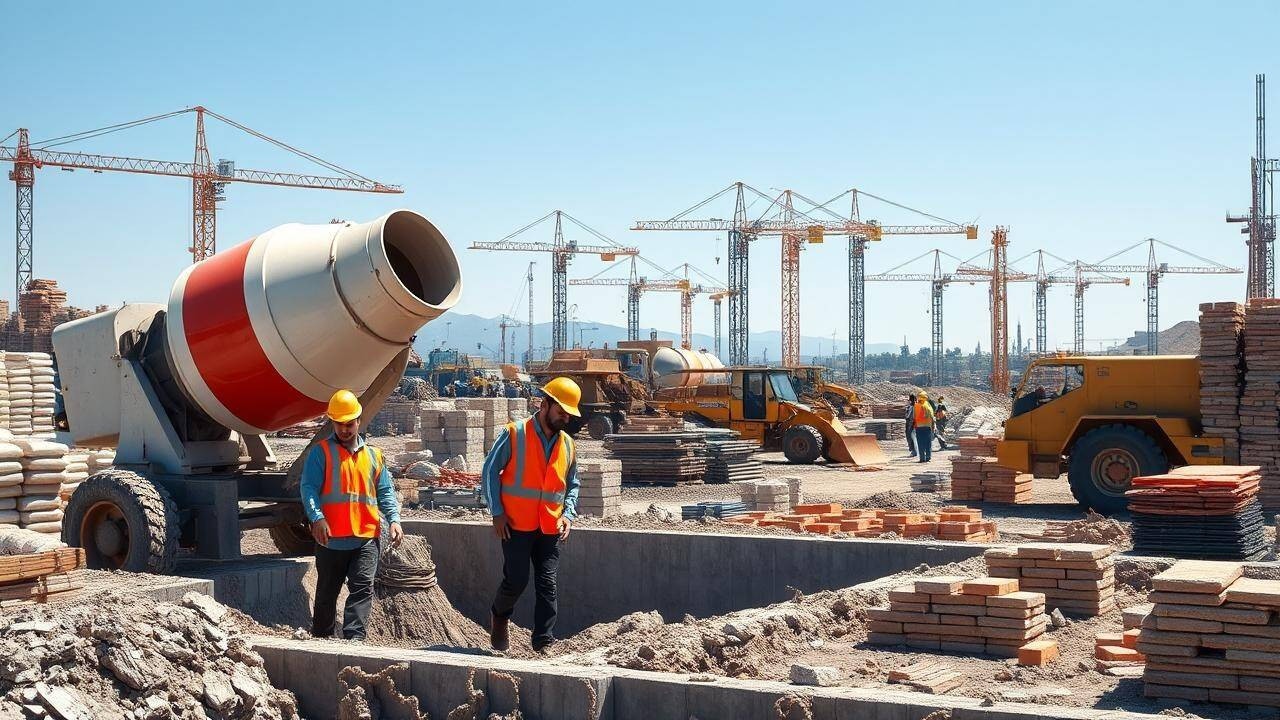India’s cement demand is projected to grow by 7-8% in FY26, fueled by government housing schemes like PMAY and increased infrastructure development, according to Axis Securities. After a slow start in Q1FY25, the sector rebounded, with May 2025 volumes reaching 39.6 million metric tonnes.
Cementing India’s Future: How Real Estate and Affordable Housing are Driving Demand
India’s infrastructure landscape is undergoing a dramatic transformation, and at the heart of this construction boom lies cement – the binding agent of progress. But what’s fueling this insatiable demand, and can it be sustained? A recent report shines a light on the key factors driving the cement industry forward, and the outlook is surprisingly optimistic.
Forget fleeting trends; this growth appears to be deeply rooted in fundamental economic drivers. The report suggests that the real estate sector, combined with a significant push for affordable housing, particularly through the Pradhan Mantri Awas Yojana (PMAY), are the primary forces behind the sustained cement demand. Think about it: every home built, every road paved, every bridge erected requires significant quantities of cement.
The Real Estate Boom: More Than Just Luxury Condos
While images of gleaming skyscrapers often dominate headlines, the true engine of growth in the real estate sector is much broader. Increased urbanization, rising disposable incomes, and evolving lifestyle preferences are all contributing to a surge in demand for residential and commercial properties. This isn’t just about luxury condos in metropolitan areas; it’s about a nationwide need for housing and workspaces that cater to a rapidly expanding population.

Furthermore, government initiatives aimed at streamlining regulatory processes and incentivizing investment in the real estate sector are proving effective. These measures are creating a more favorable environment for developers, encouraging them to launch new projects and, consequently, increasing the consumption of cement.
PMAY: Building Homes, Building Demand
The Pradhan Mantri Awas Yojana (PMAY), India’s ambitious affordable housing scheme, is playing a pivotal role in shaping the future of the cement industry. By providing subsidies and financial assistance to low-income families, PMAY is empowering millions to realize their dream of homeownership. This initiative is not only addressing a critical social need but also generating significant demand for construction materials, with cement being a cornerstone.
The sheer scale of the PMAY project is staggering. With a goal of providing “Housing for All” by 2022 (extended to 2024), the program has triggered a massive wave of construction activity across the country. Each new affordable home requires cement, sand, steel, and other essential building materials, thus contributing to the robust growth of the cement industry.
Fiscal Year 2026: A Promising Outlook for the Cement Industry
The report paints a picture of continued growth for cement demand, projecting this trend to extend through fiscal year 2026. This optimistic forecast is predicated on the assumption that the current momentum in the real estate sector and the PMAY scheme will be sustained. However, it’s important to acknowledge that external factors, such as fluctuating raw material prices and geopolitical uncertainties, could potentially impact the industry’s performance.
Moreover, environmental concerns are increasingly influencing the cement industry. The production of cement is energy-intensive and contributes significantly to carbon emissions. As India strives to meet its climate goals, the cement industry will need to adopt more sustainable practices, such as using alternative fuels and exploring innovative production techniques. This push for sustainability could also lead to the development of new types of cement with lower environmental impact, opening up new avenues for growth and innovation. It’s crucial that the industry continues to evolve, balancing economic growth with environmental responsibility. You can read more about sustainable building practices and their impact on material choices on our site.
Navigating the Future
India’s cement industry is poised for continued growth, driven by the real estate sector and government initiatives like PMAY. While challenges remain, the long-term outlook is undeniably positive. As the nation continues to invest in infrastructure and affordable housing, cement will remain a vital component of India’s development story. The key lies in embracing sustainable practices and adapting to the evolving needs of a rapidly growing nation.







